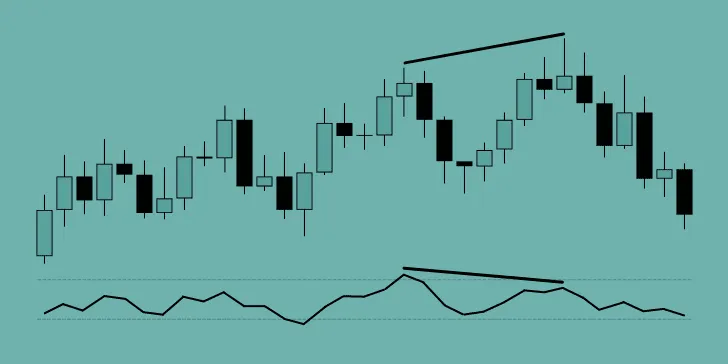
Would you like to know how to trade divergence like a pro? I often use divergence between the MACD, stochastic, or RSI indicators and price, and it’s proven to be an excellent trade setup or a qualifier in my own trading.
Divergence is the key component to much of the success that I’ve had in the Forex market and other markets.
More on Divergence here – https://en.wikipedia.org/wiki/Divergence
I truly believe that learning a divergence trading strategy that works should be a top priority for any technical trader.
In this article, I’m going to show you what divergence is, how the pros use it to gain an edge in the market, and how you can use this information to take your trading to the next level.
What is Divergence?
Divergence in trading charts is when price action differs from the action of various indicators, e.g., the MACD, stochastic oscillator, RSI, etc…
Regular divergence (which is the focus of this article) is a reversal signal, meaning it signals a change in the trend.
Example: Price makes a higher high while the indicator makes a lower high (see the image at the top).
Bullish Divergence
When I’m trading regular bullish divergence, I’m looking for periods where the price is making lower lows while the indicator is making higher lows.
This is the strongest form of bullish divergence (see the 1st example in the image below).

A bullish divergence can also be defined as a period where the price is making a double bottom while the indicator is making higher lows (2nd example).
Or…
As a period where the price is making lower lows while the indicator is making a double bottom (3rd example).
Bearish Divergence
The opposite is true when trading bearish divergence.
For regular bearish divergence, I’m looking for periods where the price is making higher highs while the indicator is making lower highs.
This is the most potent form of bearish divergence (see the 1st example in the image below).
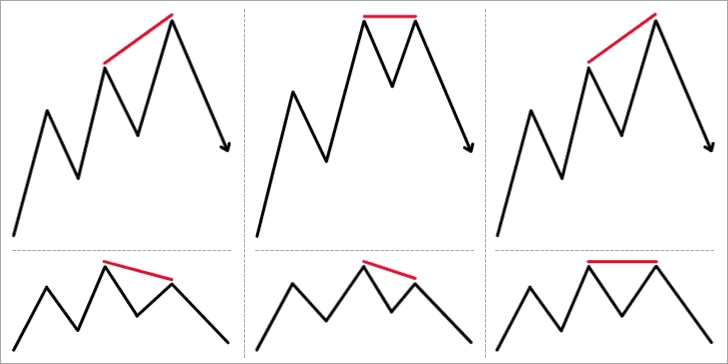
A bearish divergence can also be defined as a period where the price is making a double top while the indicator is making lower highs (2nd example).
Or…
It is a period where the price is making higher highs while the indicator is making a double top (3rd example).
Why It Works
The idea with regular divergence is that divergence between price and the indicator is showing decreased momentum that isn’t reflected in price yet.
Regular divergence essentially tells you that the trend in price is losing momentum, which could be an early indicator of a reversal.
Note: I’ve also written a guide on how to trade hidden divergence, which is a continuation signal, meaning it signals that the trend is more likely to continue.
I’ve been trading divergence on the MACD for a long time, and in recent years I started to see the benefit of trading RSI divergence as well.
Combining these two (or more) indicators on your charts and waiting for a confluence of signals can be a compelling way of spotting momentum changes.
Let’s look at some real examples of what these regular divergence patterns look like on a few different indicators.
How To Trade Divergence Like A Pro
The charts below show some good examples of how to trade divergence between the MACD, stochastic, and RSI indicators and price.
The key, and what separates the pros from the average losing trader, is how they combine their divergence trading strategy with other profitable trading strategies.
You can use many supporting trading signals when you trade divergence patterns.
This article will combine price action signals with our divergence signals to get high-probability entries.
Note: You can learn any of these candlestick signals in my free Price Action Course.
In all of the examples I included in this article, I’ve marked the bullish green and the bearish divergence in red.
How to Trade Divergence on the MACD
The first example, MACD divergence, can occur between the price and the MACD line (blue) or the histogram (grey).
In the image below, you can see a few examples of how to trade divergence on the MACD, the first of which is bullish MACD line divergence.
Notice that a bullish harami pattern formed at the lower low in price while the MACD line made a double bottom.
Although the harami pattern is relatively weak on its own, the combination of MACD divergence adds strength to our harami pattern, while the harami pattern provides a laser-focused entry trigger for trading our MACD divergence.
Note: For a more in-depth guide on how to trade divergence on the MACD, check out my article, Are You Trading MACD Divergence Correctly?
Also, if you want to trade MACD histogram divergence on the MT4 platform, check out my article, The Best MACD Indicator for MetaTrader 4 (MT4).
The next two examples (above) show bearish MACD histogram divergence.
First, the price made a double top while the histogram made lower highs. Then, the price made three consecutive higher highs, while the histogram made three successive lower highs.
We were given bearish engulfing patterns in both cases to help us time our entries.
How to Trade Stochastic Divergence
In the chart below, you can see examples of how to trade divergence on the stochastic oscillator and one example of stochastic divergence that we would skip.
Most divergence traders trade stochastic divergence from the slower %D line (grey), although some divergence trading techniques that I’ve traded rely on the faster %K line (red).
Note: The stochastic indicator pictured above is set to 8, 3, 3. Nothing else is changed. I prefer these settings when I’m using this oscillator to trade stochastic divergence.
The first two examples of bearish stochastic divergence were accompanied by bearish engulfing candlestick patterns, which helps us choose a high-probability entry point.
However, the last example never had a viable candlestick pattern form at the second or third high so we would have skipped it.
How to Trade Divergence on the RSI
The last chart (below) shows how to trade divergence on the RSI. Learning how to trade RSI divergence can be tricky.
You’ll notice that the RSI line chops up and down quite a bit, so it’s not enough to base your RSI divergence trading on any RSI highs or lows.
You have to make sure that the highs or lows that you’re basing your RSI divergence on correspond to distinguishable highs or lows in price.
Note: The same is true when you trade MACD, stochastic, or RSI divergence, but the problem is more pronounced with the RSI.
The first example of divergence in the chart above is a bullish RSI divergence, accompanied by a bullish harami candlestick pattern.
On the right side of the chart, we have an example of bearish RSI divergence accompanied by a bearish engulfing candlestick pattern.
Our RSI divergence examples would have worked out for at least a 2:1 reward-to-risk ratio.
Final Thoughts
You may or may not have noticed that these divergence examples are from about the same period. I did this to illustrate the similarities and differences of each indicator.
The stochastic oscillator missed the first considerable bearish divergence you can see on the other two charts, so I moved it forward to show some other examples.
The point is that each indicator may sometimes reveal slightly different trading opportunities.
Some traders like to stack two or more of these indicators on their charts (as I mentioned, I do).
When two or more show divergence simultaneously, they can reveal very high probability trading entries.
Learning how to trade divergence is powerful, but divergence signals should only be treated as indications of possible trading opportunities – not as buy or sell signals in and of themselves.
The pros always combine other trading signals with divergence to gain an edge in the market.
Learning how to trade price action is an excellent compliment to any divergence trading strategy, but it’s not the only way of combining entry signals.
Successful trading makes better decisions than about 95% of other traders, which is easier said than done.
It takes a proven trading system, great psychological discipline, and impeccable money management. Learning a divergence trading strategy for the MACD, stochastic, or RSI might give you the edge over typical, unprofitable retail traders.


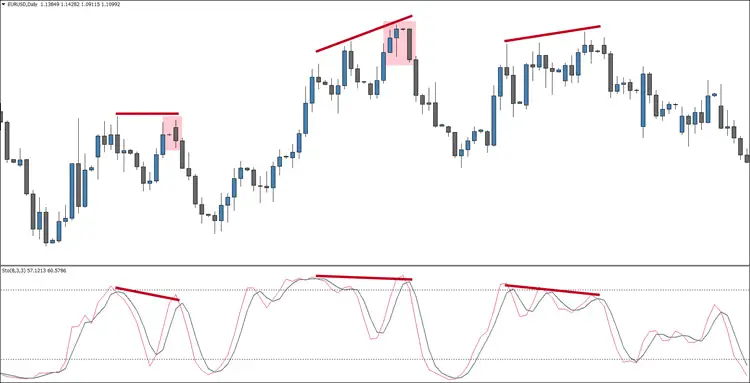
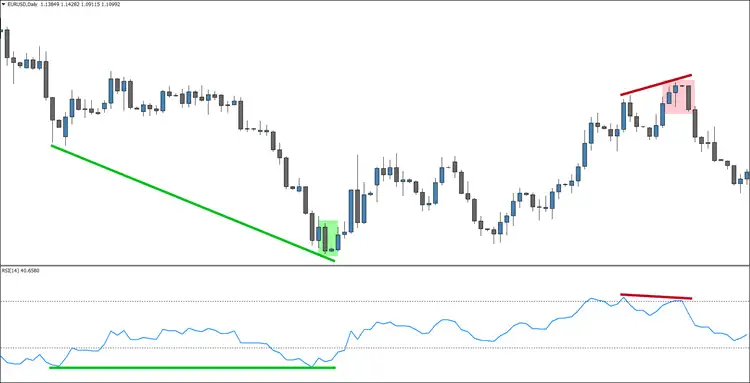
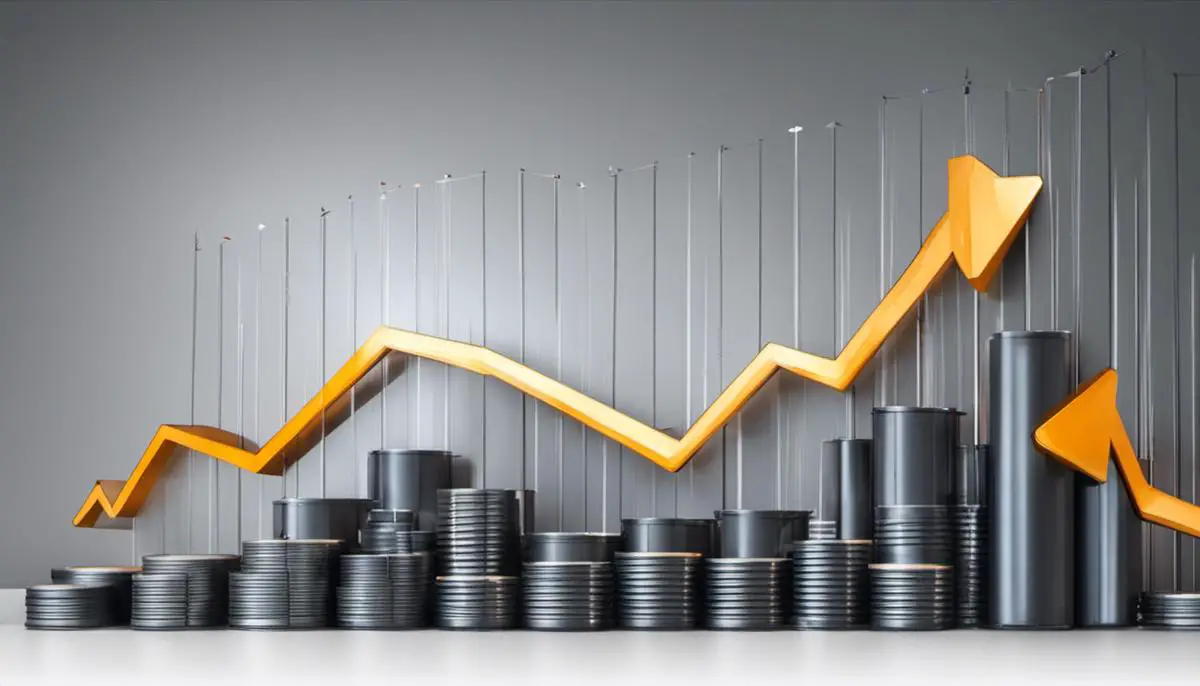
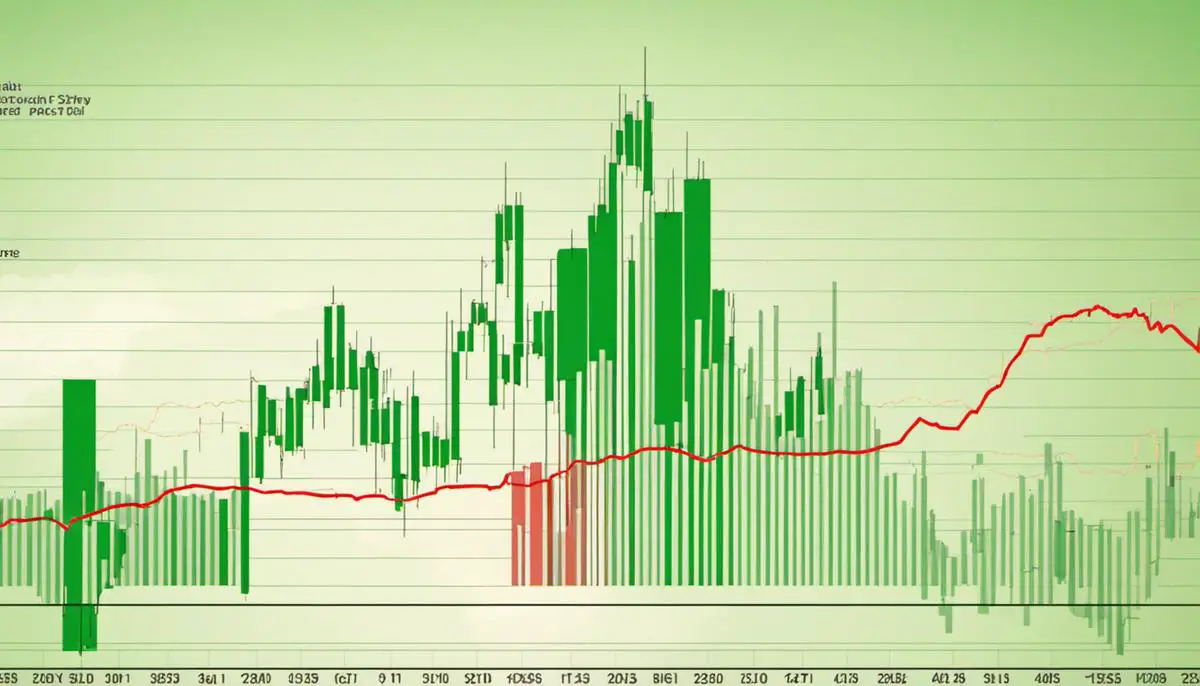
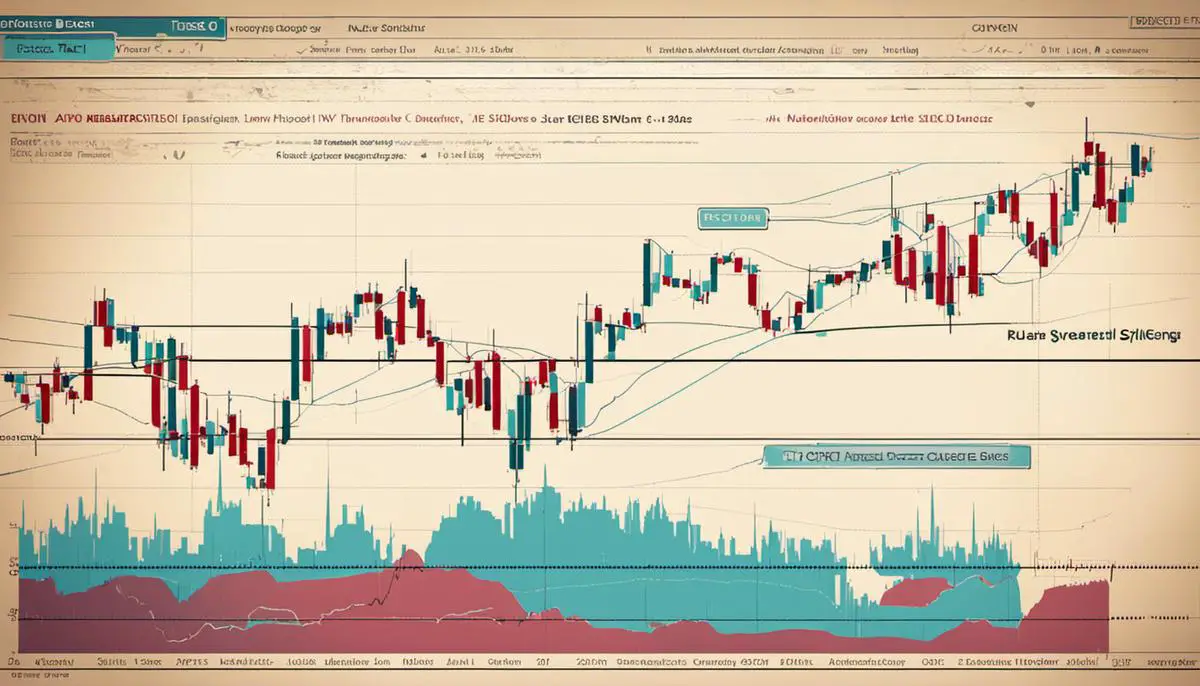
awesome input,i like it very much
Thanks for reading!
You are the best man .
What are you think about divergence with supply and demand zones ?
Hello Jwan,
Thanks for commenting, and thanks for the kind words. Usually, when you get a confluence of signals, the trade will have more follow through, so your confidence in the trade should increase.
For instance, if you get bullish divergence at a demand zone, you should get a stronger bounce out of that demand zone.
Divergence can also help you time your entries. I use divergence all the time, and I’ve found it to be pretty accurate, combined with the right trading system, for timing entries.
superb explanation on trading divergence:
Thanks a lot mate
Thanks for the kind words. I’m glad you enjoyed this.
the chance are better when we deliberately look out out for divergences based on price action and gut feel rather than the other way round
I trade divergence a lot. When trading divergence, I consider the divergence to be the key signal. I use price action to laser target my entry point. I agree that combining the two is a great strategy.
Hey .. How to avoid small divergence ?? Any idea !
Hey, Willy. If you’re trading MACD divergence, you could avoid the histogram divergence and only trade MACD line divergence as it tends to be stronger. You will obviously miss out on some good trading opportunities by not using histogram divergence, and MACD line divergence happens much less often, but the setups that do happen will be stronger.
Another thing that you could do is wait for an extended trend before taking any divergence trade. In other words, divergence of any kind works better at the end of a trend. I only trade divergence after a trend has formed.
How to use multiple timeframes with divergence? I’ve seen regular divergence on a 15M chart, but on 1H or 4H it won’t appear as a divergence, so what should I do and how should I prepare to trade divergence?
If divergence occurs on the 15M chart, then you’re trading divergence on the 15M chart. Divergence will usually not match up on multiple time frames if that’s what you mean.
If you’re saying divergence doesn’t occur on time frames other than the 15M chart, that’s simply not true. Divergence happens on every time frame.
Obviously, you’ll get more opportunities on the 15M chart vs the Daily chart because there are 96 15M candles for every 1 Daily candle.
I like your Article.
Thanks
from Leuwigajah – Cimahi Jabar Indoensian
I’m glad you enjoyed it. Thanks for reading and feel free to share it with other traders.
Which time frame divergence is better,15,30M or 1hr is better,Thanks
All signals are more meaningful on longer time frames. However, there are advantages to trading shorter ones. You could get a divergence signal, for instance, on the 1H chart and enter a trade only to have a news release spoil the setup before the afternoon is over. When trading the shorter time frames, you typically have less time exposure to the market. You get a setup and get in and out of the market before the market tone changes too much. At least, that’s the way you want it to go.
Great article and website. Thanks.
Thanks for the kind words, Jim! Glad you found it useful.
If you want to trade as a Pro first you need to get you charts right. Your daily charts are totally wrong. Forex EUR/USD session starts at 5pm and ends at 5pm EST next day. You charts shows the Sunday portion of Monday session as a separate bar! Next: Your set of indicators is very limited. There are very important divergences on your chart (the top one) which you cannot see, those divergences give accurate entry points and price targets.
Divergence trading makes perfect sense, this is what the real Pro (those who drive all those markets) are using, but it requires a hell of support from dedicated software (you would need to develop it yourself), and discovery all those fancy chart mechanisms and strategy rules. Nobody has ever published anything like that, because publishing it would not make sense at all.
Sylvester,
A couple of things:
First, these aren’t my actual trading charts. They are just used for illustration. Surely you noticed that one illustration showed the MACD, one showed the stochastic oscillator, and one showed the RSI indicator. Seems obvious to me, but that’s me. That being said, the illustrations are there to highlight a specific idea I’m trying to get across – not to point out every possible entry on the chart.
Second, professional retail traders are not what drives the market, generally. There just isn’t enough money between them to significantly impact the market. In fact, retail traders as a whole only make up about 15% of the market. The large banking institutions and other large liquidity providers cause most of the volatility in the market. There have historically been exceptions to that rule for short periods of time, but that’s the rule.
Thanks for reading.
Great information Chris. Thank you so much!!
Hey Guss! Thanks for reading! I’m glad I could help you.
Hello Chris, do you advise using of multiple indicators for spotting divergence?
I’ve actually been making use of the OBV indicator but I need more confirmation before taking trades
You could try that. Sometimes too many indicators for one metric and lead to late entries or missing good trades. Just test whatever you’re doing thoroughly.
As for myself, I just use the MACD indicator. I do usually combine that with other entry triggers, such as candlestick signals. I use the candlestick signals to confirm the reversal or continuation of price (divergence or hidden divergence).
That’s what has worked best for me when I’m trading divergence.
Hi Chris! Please what do you mean by entry trigger or candles Stick signals
An entry trigger is just the signal you use to know when to get into the trade. In this article, I talk about using divergence for the trade setup, and possibly using something like candlestick signals for the entry trigger. In other words, you’re seeing (for example) bullish divergence on your chart, and you get in when you get a good bullish candlestick signal. You can learn how to trade candlestick signals for free on this website.
I prefer combining RSI and Stochastic divergence on MT4/5. Hope it will be alright?
That’s fine. Do what works for you. Good luck!
Thanks for the many different articles and guides that you have taken the time to produce. I have found value in a lot of the material you have so generously provided to be quite useful. Thank you Chris for you time and effort. Oh yea, ignore Sylvester, there are always gonna be haters in every crowd no matter how good the content. I don’t see him many any great contributions…
Hey Dave,
Thanks for the kind words, brother! I really appreciate it. Yeah… I get haters from time to time. I delete their comments if they are not helpful in any way. I left that one up in case it answers questions other readers may have.
I’ve been telling readers since 2011, when I started this site, to use NY close charts. That guy obviously hasn’t read much from me. He probably read half of this post and figured he had nothing to learn from me. That’s fine.
Thanks for reading and commenting! Good luck!
One thing though. I can’t seem to get the BreakEven.ea tool working. I have installed it into the EA folder on my mt4. I have dragged it onto my chart and the smiley face is smiling. I have the “allow .dll imports” and “allow auto trading” checked. I also have the Auto Trading button enabled. I have set the active threshold set for 10 pips with 2 pips in profit (for testing) to see if the stop loss gets activated and filled in and if the ea closes 1/2 of my trade size. The ea isn’t doing any of these things. Any idea what I could doing wrong? I have restarted my mt4 and that still hasn’t helped either. I have also closed all active trades and started over but still the same result. Nothing.
It may be that MT4 got another update that broke that EA. MetaQuotes does that all the time. I can’t tell you how many times I’ve had to update those EAs or find others that are similar that still work.
That’s one reason I don’t trade with MT4 anymore. I’ve been using TradingView for years. Nothing ever breaks.